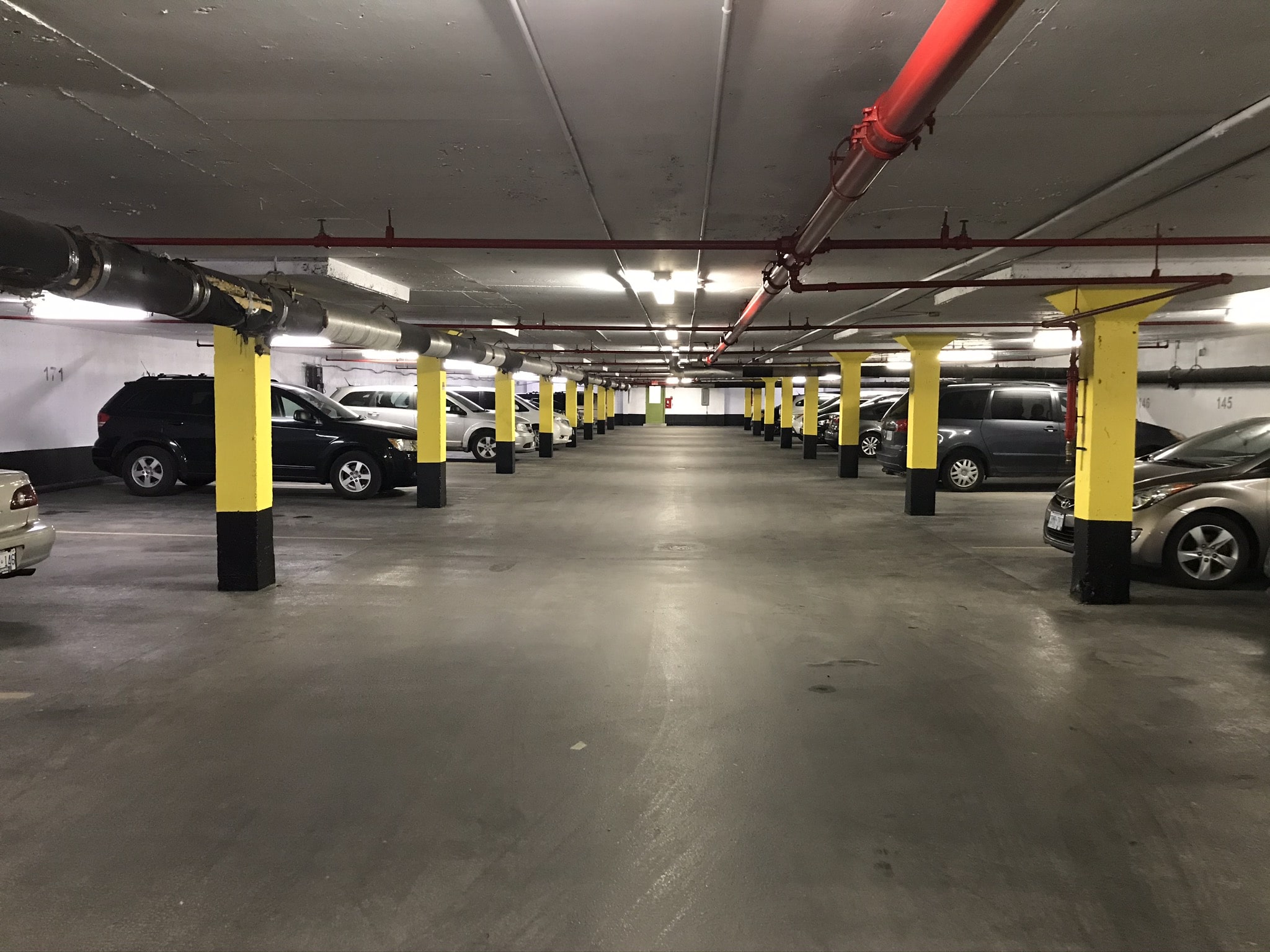The main point of entrance for most residents, owners and visitors in a high-rise condominium is the underground parking garage, and the condition of the garage says a lot about the property, the corporation and the management. Unfortunately, in many cases, the underground parking facility is not viewed as a high priority, resulting in poorly lit areas, flaking paint on ceilings and walls, and rusting, unmarked pipes — all of which leaves the garage unsightly and unsafe. Some garages don’t even meet the basic requirements mandated in municipal bylaws and the provincial fire code.
So, why doesn’t parking garage maintenance occur as often as it should? In a word, logistics. Between project management, product specification and bylaw compliance, these types of painting projects can be daunting — but they don’t have to be. To help shed light on the process, here are answers to questions board directors and property managers commonly ask.
When should painting occur?
Garage painting can take place anytime from spring to fall, but planning should start as early as possible. Cars must be removed from the garage while the painting takes place, and it’s easier to get the city to accommodate temporary street parking before summer festivals and events start. Also, preparing and painting a garage creates a lot of soot, especially after the pipes are sanded, so delay power sweeping and drain and catch basin cleaning until afterwards to avoid having to repeat these processes.
Where do the cars go?
Anywhere but inside. Cars can usually return to the underground parking garage after 5 p.m., but must be out by 9 a.m. There are several ways to accommodate cars during the day. Some buildings have enough visitor parking and above-ground parking to accommodate the extra cars. Otherwise, find out whether the city can accommodate street parking or see if it’s possible to make arrangements with a neighbouring building. In one project, management set up a shuttle service from the building to a local shopping mall parking lot where residents were temporarily allowed to park.
What kind of paint should be used?
Use only high-quality products for a paint job that will last 10 to 15 years. For walls and ceilings, use 100 per cent acrylic exterior paint. For pipes, use industrial rust primer and urethane enamel. The contractor should supply product data sheets, which can be consulted to verify that high-quality products are being used.
What are the most critical workplace hazards?
Exposure to carbon monoxide (CO) and vehicle traffic.
The gas-powered power washers that the contractor uses increases workers’ exposure to CO. Workers should wear a personal CO gas detector so they are alerted if CO levels increase. To increase air exchange, ensure that all exhaust vents are operating during the power-washing phase.
One of the top four workplace hazards that cause injury or death of workers in Ontario is being struck by a vehicle. Workers should wear high visibility vests and cordon off their work area. Depending on the project size, using additional convex mirrors or temporary traffic signals can help prevent vehicles from entering the areas where workers are present.
What are the minimum requirements?
Toronto’s property standards bylaw requires walls, pillars and ceilings to be free of peeling paint, cracks, and holes, and all walls and pillars to be painted white with a solid black dado (a wide band). The same bylaw also requires emergency exit doors and frames, plus part of the wall, to be painted green with all appropriate signage present and visible.
The Ontario Fire Code states that all sprinkler systems and other fire protection equipment must be protected from corroding. Sprinklers must be painted safety red, gas and physical hazards yellow, and drainage grey or black.
Non-compliant underground garages are not only unsafe but leave the corporation, directors and management open to liability in the event of an accident.
What should the board look for in a contractor?
Experience and reputation. Contractors that paint several garages every year should be aware of pertinent bylaws and codes. As well, there are hundreds of gallons of paint involved, so consider whether contractors have buying power with their suppliers. Paint accounts for approximately 35 per cent of the cost of a garage project, and inexpensive paint will end up costing more if re-painting is required well before the 10-year mark. Also, check references.
Should the board meet with the contractor beforehand?
Yes, the contractor needs to work with the board of directors and property manager to develop a schedule that makes sense for production and also addresses owners’ concerns. One reason underground garages aren’t painted as often as they should be is due to the logistics involved in emptying large sections of a garage daily.
The contractor will want to know: Do most owners drive to work? Is there a language barrier? Are there many seniors? Are there owners on extended vacation? Have owners been cooperative or difficult in the past with similar projects? These factors will inform the production schedule, the accountability protocols for owners that refuse to cooperate, the communication frequency and style, plus the level of involvement required from building security and staff.
The simple truth is that garage painting inconveniences owners, so it can be difficult to organize and execute these plans. The contractor should educate the board on the intricacies of garage painting, and the board should educate the contractor on the make-up and dynamics of the community.
That information, combined with effective communication and strong project management, should set these types of projects up for success and ultimately produce bright, clean and safe underground parking garages.

